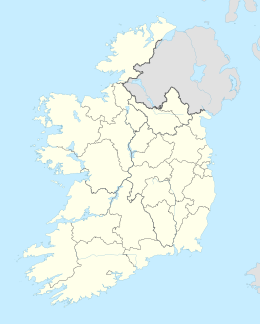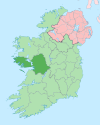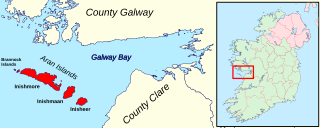
The Aran Islands or The Arans are a group of three islands at the mouth of Galway Bay, off the west coast of Ireland, with a total area around 46 km2 (18 sq mi). They constitute the historic barony of Aran in County Galway.

Inishmaan is the middle of the three main Aran Islands in Galway Bay, off the west coast of Ireland. It is part of County Galway in the province of Connacht. Inishmaan has a population of about 184, making it the least populous of the Aran Islands. It is one of the most important strongholds of traditional Irish culture. The island is predominantly Irish-speaking and part of the Gaeltacht, though all inhabitants have knowledge of English.

Tory Island, or simply Tory, is an island 14.5 kilometres off the north-west coast of County Donegal in the north-west of Ulster, the northern province in Ireland. It is officially known by its Irish name Toraigh, which, although spelled thus, is pronounced the same as the English version. It is the most remote inhabited island of Ireland. The name toraigh means "place of steep rocky heights".
This is a bibliography of works relating to the Aran Islands.

Inishbofin is a small island off the coast of Connemara, County Galway, Ireland. Inishbofin has around 180 inhabitants and is a tourist destination.

Inishturk is an inhabited island of County Mayo, in Ireland.

Inisheer is the smallest and most easterly of the three Aran Islands in Galway Bay, Ireland. With 343 residents as of the 2022 census, it is second-most populous of the Arans. Caomhán of Inis Oírr is the island's patron saint. There are five small settlements: Baile Thiar, Chapeltown, Castle Village, Baile an Fhormna and Baile an Lorgain.
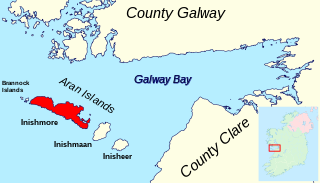
Inishmore is the largest of the Aran Islands in Galway Bay, off the west coast of Ireland. With an area of 31 km2 (12 sq mi) and a population of 820, it is the second-largest island off the Irish coast and most populous of the Aran Islands.
Deer Island or Inishmore is located in County Clare, Ireland.

Inishbofin, also Inishbofinne, is an island and townland off the coast of Machaire Uí Rabhartaigh (Magheraroarty), County Donegal, Ireland.

Inishnee is a small island off the coast of Ireland, in Roundstone Bay near the village of Roundstone in Connemara in County Galway. It is equipped with a lighthouse. As of 2011, it had a population of 43.
Dara Ó Conaola is an Irish writer who writes in Irish. His first book of short stories, Mo Chathair Ghríobháin, was published in 1981. A later short book of eight short stories, translated to English by Gabriel Rosenstock, was published as Night Ructions in 1990. The book was launched at the 1990 Sunday Times Festival of Literature, Hay-on-Wye, Wales.
Leo of Inis Airc was an early medieval Irish Christian saint.

Connemara Airport or Connemara Regional Airport is located at Inverin in the Connemara region of Ireland, 15 nautical miles west of the city of Galway. It is also known as Spiddal Airport, Inverin Airport, or Minna Airport, a name also used by Minna Airport in Minna, Nigeria.

Cleggan Bay is a natural ocean bay in County Galway, Republic of Ireland.
Inishloe or Low Island is an uninhabited island in the River Fergus and townland in the Kildysart parish of County Clare, Ireland.

Inishmeane is a small island and a townland off the coast of Gweedore, County Donegal, Ireland and was once home to a vibrant fishing community. The island has been unpopulated for decades but in recent years some people have started to return.

Inishturk is a small island and a townland of County Galway, in Ireland. The island is also referred as Inishturk South in order to tell it apart from the Inishturk island located in County Mayo.
Turbot is a small island and a townland of County Galway, in Ireland, also referred as Inishturbot and Talbot Island.
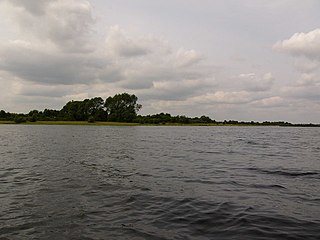
Inchbofin is an island situated in Lough Ree on the River Shannon, in central Ireland.

